Is your furry friend not as thrilled about their regular kibble as they used to be? Well, you’re not alone! Many Dachshund owners are exploring new ways to keep their wiener dogs healthy and happy, and one of the popular options gaining traction is the raw food diet. Yep, the same kind of diet that harks back to our pups’ wild ancestors and is making its way into modern pet bowls.
In this blog post, we dive into the world of raw food diets for Dachshunds, giving you the lowdown on what it’s all about and whether it might be the perfect fit for your dog. We’ll cover all the essential stuff, from the benefits and potential risks to how to get started on this journey with your pup.
It’s important to keep in mind that each dog is different, including our beloved dachshunds. To ensure your pup’s health, it’s best to approach their diet with caution and make informed choices. While we are passionate about dachshunds, we are not trained veterinarians. Therefore, we strongly recommend consulting with your trusted vet before making any significant changes to your furry friend’s diet.
So, if you’re curious about the raw food diet and want to learn more about the possibilities it holds for your Dachshund, keep reading! We’re going to fetch some juicy details and guide you through the ins and outs of raw feeding.
(Note: This blog post is for informational purposes only and should not be considered a substitute for professional veterinary advice. Please consult your vet before making any changes to your Dachshund’s diet.)

Understanding Raw Food Diets for Dachshunds
Alright, let’s dig into the nitty-gritty of raw food diets for our adorable Dachshunds!
Picture this: your Dachshund’s ancestors, way back in time, were wild hunters who thrived on a diet of raw meat, bones, and maybe even the occasional veggie. Fast forward to today, and we have the raw food diet, inspired by the very same eating habits that kept those wiener dogs’ ancestors going strong.
So, what exactly is a raw food diet for Dachshunds? Well, it’s pretty much what it sounds like – feeding your pup a menu of uncooked, fresh ingredients. The idea is to go back to the basics, providing your furry friend with a diet that is closer to what they would have eaten in the wild (minus the whole hunting thing, of course).
Why are some Dachshund owners hopping on this raw food bandwagon? The theory is that raw diets offer a more natural and biologically appropriate way of nourishing our canine companions. Since Dachshunds share DNA with their wild ancestors, some folks believe that their bodies might be better suited to chomping on raw goodies.
But hey, it’s not all bones and meat! The raw food diet for Dachshunds can include a variety of ingredients like muscle meat, organ meat, bones (yes, they can handle them when they’re raw), veggies, fruits, and even certain supplements to make sure they get all the essential nutrients.
Now, let’s not forget that each doggo is a unique individual – just like us, right? Some Dachshunds may thrive on a raw food diet, while others might prefer their kibble or have specific health considerations that need to be taken into account. That’s why it’s essential to get the green light from your trusty veterinarian before making the switch to raw feeding.
We know you’re all ears to learn more about the benefits and potential risks, so stay tuned for the next leg of our raw food adventure!
Benefits of Raw Feeding for Dachshunds
Now, we’re about to uncover the juicy details about the benefits and potential risks of this raw food revolution for our beloved Dachshunds!
One of the positive aspects that raw feeding enthusiasts rave about is the potential improvement in digestion and nutrient absorption. See, when our wiener dogs munch on raw, unprocessed goodies, their bodies might find it easier to break down and utilize all those essential nutrients. It’s like giving them a one-way ticket to a first-class nutrient feast!
Oh, and let’s not forget about the dental perks! Chomping on raw meat and bones can be like nature’s toothbrush for Dachshunds. Gnawing away at those bones might help reduce tartar buildup, leaving those pearly whites shining brighter than ever. Some Dachshund owners have also reported improvements in their pups’ allergies and skin conditions after switching to a raw food diet.
Now, here’s our friendly reminder – before you embark on this raw food journey with your Dachshund, it’s crucial to consult with your veterinarian. They’ll give your furry friend a thorough check-up and help you determine if a raw food diet is the right fit for their needs and lifestyle.
Stay tuned for the next part, where we’ll guide you through the smoothest transition to a raw food diet for your wiener dog. Remember, we’re in this together, and your Dachshund’s well-being is our top priority!
Potential Risks and Precautions
Alright, let’s talk about the potential risks and precautions of raw food diets for our precious Dachshunds!
First and foremost, we’ve got to address the elephant – well, not elephant, but bacteria – in the room. Raw food can harbor harmful pathogens like Salmonella or E. coli, which can cause foodborne illnesses in both dogs and their humans. Now, before you start feeling like you’re handling a ticking time bomb, know that proper food handling and hygiene can go a long way in reducing the risk.
One crucial precaution is to treat raw meat like you would with any other raw food – keep it separate from human food, wash your hands, and sanitize all surfaces. Also, be cautious with where you source your ingredients; reputable suppliers and human-grade meat can help minimize the risk of contamination.
Next up, let’s talk nutrients. Like us, Dachshunds need a balanced diet to stay healthy and happy. If we’re not careful, a raw food diet might miss the mark on providing all the essential vitamins and minerals. Hey, we all want our furballs to be in tip-top shape, so it’s essential to work with a veterinarian or a qualified pet nutritionist to create a balanced meal plan for our pup’s specific needs.
Now, here’s a chewy topic – bones. When they’re cooked, bones can turn into splintery hazards that might lead to choking or internal damage. But when they’re raw, some Dachshunds are naturals at gnawing on them safely. It all comes down to selecting the right bones for your wiener dog’s size and chewing habits. Smaller, softer bones are generally safer than big, weight-bearing ones.
Another thing to keep an eye on is our Dachshunds’ dental health. While raw diets can help reduce tartar buildup, some pups may still need additional dental care. Regular teeth checks and cleanings by your vet can keep those chompers sparkling and healthy.
Remember, we’re not here to scare you away from the raw food adventure – just to keep you informed and ready to tackle any potential hurdles. A raw food diet can be super beneficial for some Dachshunds, but it’s not a one-size-fits-all solution. Each pup is different, and what works for one might not be the perfect fit for another.
Stay tuned for the next part of our raw food journey, where we’ll guide you through the smoothest transition to this crunchy way of dining for your Dachshund.
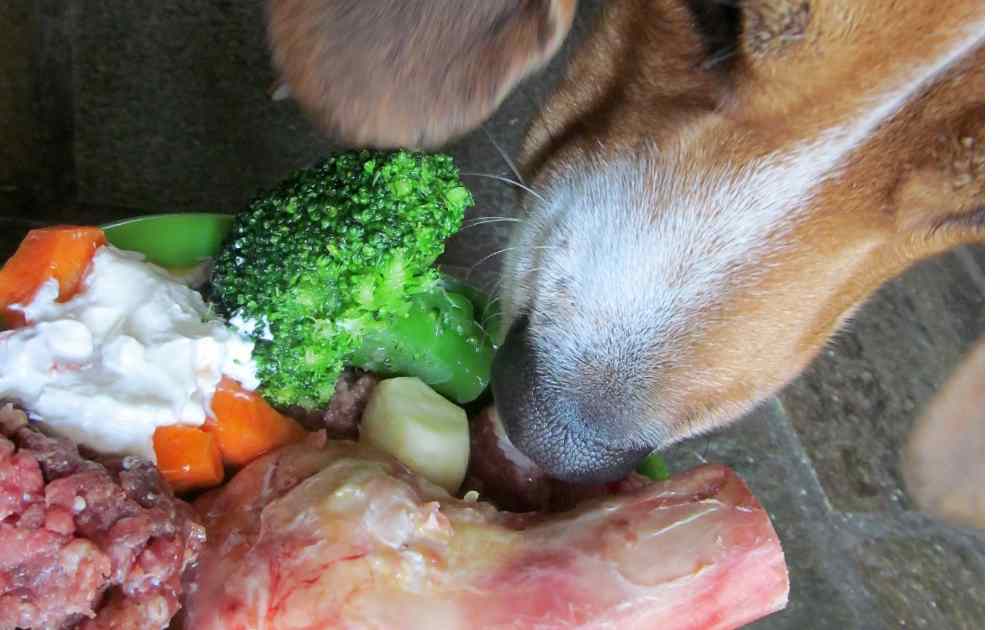
Transitioning Your Dachshund to a Raw Food Diet
Time to unleash our inner chef and guide our Dachshunds through the exciting transition to a raw food diet!
So, you’ve done your research, consulted your veterinarian, and decided to take the leap into the world of raw feeding – congrats! But we’re not diving in paws-first just yet. Like introducing any new change, transitioning to a raw food diet for your Dachshund requires a bit of careful planning and patience.
Here’s our step-by-step guide to make this transition smooth:
- Start Gradually: Just like we wouldn’t switch from a pizza-only diet to a salad bar overnight, we don’t want to shock our Dachshunds with a sudden diet change. Begin by adding small portions of raw food to their current meals. As the days go by, gradually increase the raw portion while decreasing the old diet.
- Observe and Adjust: Keep a close eye on your Dachshund during this transition phase. Watch for any signs of tummy upset, loose stools, or changes in behavior. If you notice any issues, don’t panic! It might just mean we need to adjust the amount or type of raw food we’re introducing. Our goal is to make this an enjoyable experience for our pups.
- Variety is the Spice of Life: Just like we like to mix things up in our meals, our Dachshunds will appreciate some variety too! Offer a range of proteins (chicken, beef, turkey, etc.) and include some veggies and fruits for added nutrients and fun. However, remember that not all human foods are safe for dogs, so always double-check before sharing your snacks.
- Keep the Tail Wagging: We want this transition to be a tail-wagging experience for our pups, so let’s make mealtime exciting! Incorporate some interactive toys or puzzles to keep them mentally stimulated while they enjoy their raw meals.
- Be Patient and Flexible: Every Dachshund is a unique individual, and their pace of adjustment may vary. Some may take to raw feeding like a pro, while others might need more time to warm up to the new menu. Be patient, and don’t hesitate to tweak the plan if needed.
- Monitor their Health: Throughout the transition, keep an eye on your Dachshund’s overall health and well-being. A happy and healthy pup is the best indicator that we’re on the right track!
Remember, transitioning to a raw food diet isn’t a one-time leap – it’s a journey. As we progress, we’ll learn more about our Dachshund’s preferences and needs, making adjustments along the way.
And, of course, don’t forget to continue working closely with your veterinarian during this process. They’ll be our trusty guide and partner, helping us navigate any bumps or barks in the road.
Stay tuned for the next part of our raw food adventure, where we’ll delve into building a balanced raw diet that’ll make your Dachshund’s taste buds sing!

Building a Balanced Raw Diet for Your Dachshund
Time to put on our chef’s hat and create a balanced raw diet that’ll make our Dachshunds’ taste buds dance with delight!
Now that we’re transitioning our Dachshunds to a raw food diet, it’s essential to ensure they’re getting all the nutrients they need for a healthy and happy life. A balanced raw diet for our Dachshunds should include a variety of ingredients that cater to their specific nutritional requirements.
Here are the key components of a well-rounded raw diet for our wiener dogs:
- Protein Power: Protein is the superhero of our Dachshunds’ diet! It’s essential for muscle development, healthy skin, and a shiny coat. You can include proteins like raw beef, chicken, turkey, lamb, and even fish like salmon (boneless, of course) in their meals. Remember, variety is key to providing a wide range of nutrients.
- The Good Fats: Don’t be shy about healthy fats! They’re vital for energy and nutrient absorption. Sources of healthy fats include eggs (yolk and whites), fish oil, and certain cuts of meat. Just be mindful of the portion sizes, as Dachshunds have little tummies.
- Veggies and Fruits: Our Dachshunds can get some of their vitamins and minerals from plant-based sources. Veggies like carrots, broccoli, spinach, and fruits like apples and blueberries can add a nutritious punch to their meals. But remember, not all fruits and veggies are safe for dogs, so let’s stick to the pup-friendly ones.
- Organ Meets: Organ meats might not be our go-to snack, but they’re like a multivitamin for our Dachshunds! Liver, kidney, and heart are excellent sources of essential nutrients, like iron, B vitamins, and taurine. Offer these in small amounts, as they’re potent stuff!
- Calcium and Bone Health: As much as our Dachshunds love gnawing on bones, we need to be cautious with bone safety. Include some raw, edible bones like chicken necks or wings to provide calcium for their bone health. However, avoid weight-bearing bones or cooked bones, as they can splinter and pose a risk.
- Supplements, if Needed: In some cases, your Dachshund might benefit from additional supplements, especially if they have specific health concerns. Talk to your veterinarian about whether your pup could benefit from extras like fish oil, probiotics, joint supplements, or vitamin/mineral supplements.
Remember, it’s all about balance! The key is to offer a mix of proteins, fats, veggies, and organ meats in appropriate proportions. But hey, we’re not mathematicians here – there’s no need to stress over measuring every ounce of food. Instead, focus on providing a variety of ingredients over time to give your Dachshund the best chance at a well-rounded diet.
And just like any culinary adventure, let’s keep things fun and interesting! Rotate proteins and ingredients to keep mealtime exciting for our furry foodies. Plus, who doesn’t love a little surprise in their bowl?
And as always, consult your vet for the best advice tailored to your pup’s specific needs!
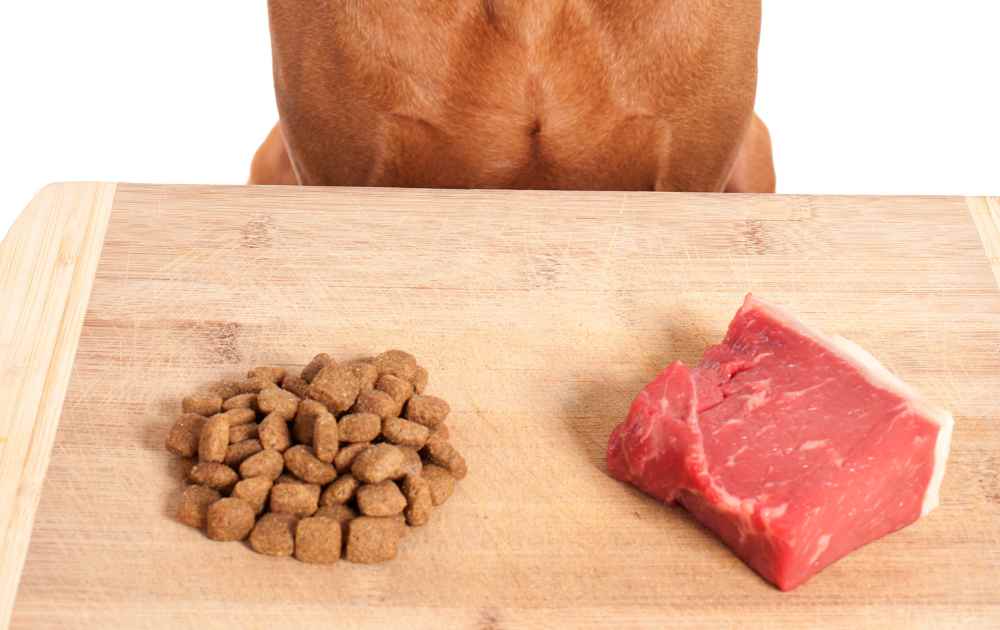
Commercial vs. Homemade Raw Food
Alright, it’s time to dive into the age-old debate – commercial vs. homemade raw food for our adorable Dachshunds!
When it comes to raw feeding, we have two options on the menu: commercially prepared raw food or homemade raw meals. Let’s sniff out the pros and cons of each to help you decide which suits your Dachshund best.
Commercially Prepared Raw Food:
Pros:
- Convenience: Ready-to-serve meals are like takeout for our pups! It saves us time in the kitchen and ensures a balanced diet without the need for extensive planning.
- Balanced Formulas: Reputable brands usually provide well-balanced formulas that meet the nutritional needs of our Dachshunds. They’ve got the recipe down to a science!
- Peace of Mind: Quality control and food safety are typically top priorities for commercial raw food companies. So, you can chow down knowing they’ve got your pup’s well-being in mind.
Cons:
- Price Tag: Like a gourmet meal, premium commercial raw food can be a bit pricey. But hey, quality ingredients come at a cost, right?
- Limited Variety: Commercial raw food may have fewer options compared to homemade meals. So, if your Dachshund is picky, they might crave more variety.
Homemade Raw Food:
Pros:
- Customizability: The kitchen’s your playground! With homemade meals, you have complete control over the ingredients, allowing you to cater to your Dachshund’s specific needs and preferences.
- Variety Galore: Want to mix things up daily? Go for it! Homemade meals open the door to a wide range of proteins, veggies, and fruits to keep your pup excited about mealtime.
- Bonding Experience: Preparing your Dachshund’s meals at home can be an awesome bonding experience for you and your furry friend.
Cons:
- Nutritional Balance Challenge: Cooking up a balanced diet takes some research and know-how. Ensuring your pup gets all the essential nutrients can be a bit like a culinary puzzle.
- Time and Effort: Homemade meals demand time in the kitchen and a bit of meal prepping. But hey, for the love of our Dachshunds, it’s all worth it!
Now, before you choose a side, remember that there’s no one-size-fits-all answer. Some Dachshunds thrive on commercial raw food, while others may prefer the customized touch of homemade meals. It’s all about finding what works best for your furry foodie!
And here’s our friendly reminder – no matter which option you choose, always prioritize the quality and safety of the ingredients. Whether it’s pre-packaged or homemade, focus on providing the best for your Dachshund’s well-being.

Tips for Success and Maintenance
Alright, it’s time for some tips to ensure a successful and smooth raw feeding journey for your Dachshund! Below you will find some helpful pointers:
1. Start Slow, Stay Patient: Rome wasn’t built in a day, and neither is a raw food pro! Take it one step at a time during the transition, and be patient with your Dachshund. Every pup adjusts at their own pace, so go with the flow and celebrate the progress, no matter how small.
2. Mix It Up: Variety is the spice of life, even for our four-legged foodies! Keep things interesting by rotating proteins, veggies, and fruits in your Dachshund’s meals. They’ll appreciate the exciting flavors and textures, just like we do with our favorite treats.
3. Balance is Key: A balanced diet is like a secret recipe for a healthy and happy Dachshund. Work closely with your vet to ensure your pup’s meals provide all the necessary nutrients in the right proportions. They’ll be your trusted culinary consultant!
4. Monitor their Health: Our Dachshunds can’t speak our language, but they can communicate through their behavior and well-being. Keep an eye on their energy levels, coat condition, and bathroom habits. Any significant changes might be a signal to consult your vet.
5. Chew, Chew, Chew: Chomping is part of the raw food fun! Since raw food requires more chewing than processed kibble, it helps keep your Dachshund’s dental health in check. Those pearly whites will be grateful for the natural toothbrush treatment!
6. Keep it Safe: Safety first, always! Supervise your pup during mealtime, especially when they’re gnawing on bones or other raw goodies. If you have multiple dogs, ensure they eat in a peaceful environment to avoid any mealtime squabbles.
7. Portion Control: Dachshunds are small but mighty! Keep an eye on portion sizes to avoid overfeeding, which can lead to unwanted weight gain. Remember, maintaining a healthy weight is key to your pup’s overall well-being.
8. Respect Individual Preferences: Just like us, our Dachshunds have their unique tastes and preferences. If you notice they’re not a fan of certain ingredients, no worries! Make adjustments to accommodate their foodie quirks.
9. Consistency is Key: Like a well-practiced recipe, consistency in feeding schedules is essential. Stick to regular meal times to establish a routine that your Dachshund can rely on.
10. Happy Treat Time: Even on a raw food diet, treats can be part of the fun! Just make sure they’re healthy and fit into your Dachshund’s overall diet plan. We all deserve a little treat now and then!
Remember, every journey has its bumps and turns, but with love and dedication, your Dachshund will thrive on their raw food adventure. The key ingredients are patience, balance, and a sprinkle of joy!
Conclusion
We hope you’ve gained some valuable insights and feel more prepared to embark on the raw feeding path with your adorable wiener dogs.
As we wrap up, let’s take a moment to recap the key ingredients for a successful raw feeding experience:
1. Knowledge is Power: Research and learn as much as you can about raw food diets for Dachshunds. Knowledge will be your trusty sous chef on this culinary adventure.
2. Consult Your Vet: Don’t hesitate to seek their guidance and expertise throughout this journey. Always consult your vet! While we’re passionate about Dachshunds, we’re not vets! Always consult your vet for the best advice tailored to your pup’s specific needs.
3. Transition with Care: Slow and steady wins the race! Transitioning to a raw food diet requires patience and gentle adjustments to ensure a smooth experience for your furry friend.
4. Embrace Variety: Keep mealtime exciting by introducing a variety of proteins, veggies, and fruits. After all, a diverse menu is the spice of life!
5. Balance the Bowl: A well-balanced diet is a recipe for a healthy and happy Dachshund. Work with your vet to create meals that cater to your pup’s individual needs.
6. Observe and Adjust: Pay attention to your Dachshund’s health and behavior during the transition and beyond. Their feedback will guide you on this culinary journey.
7. Safety First: Safety is the top priority! Supervise mealtime, choose appropriate bones, and handle raw food with care to ensure your pup’s well-being.
8. Enjoy the Bonding: Preparing meals for your Dachshund can be a delightful bonding experience. Cherish these moments with your furry companion!
9. Be Patient and Flexible: Every Dachshund is unique, so embrace flexibility and adapt your approach based on your pup’s preferences and needs.
Always remember that the best meals are made with love and consideration. Whether you choose commercial or homemade raw food, the most important ingredient is the dedication you have for your Dachshund’s well-being.

Frequently Asked Questions about Raw Feeding
Q1: Are bones safe for my Dachshund?
A: Great question! Raw, edible bones can be safe and beneficial for your Dachshund’s dental health and calcium needs. However, avoid cooked bones, as they can splinter and cause harm. Also, make sure to choose bones appropriate for your Dachshund’s size and chewing habits.
Q2: What about the risk of bacteria in raw food?
A: You’re right to be cautious! Raw meat can carry harmful bacteria, but proper food handling and hygiene can reduce the risk. Always wash your hands and clean surfaces after handling raw food. Buy from reputable sources and opt for human-grade meat when possible.
Q3: Can raw food cause choking or blockages?
A: Safety first! While raw food can be safe, always supervise your Dachshund during mealtime, especially when they’re chewing on bones. If you notice any signs of choking or blockages (e.g., difficulty breathing, vomiting), seek immediate veterinary attention.
Q4: Should I add supplements to my Dachshund’s raw diet?
A: It depends! A well-balanced raw diet usually provides most of the nutrients your Dachshund needs. However, in some cases, supplements like fish oil or joint supplements might be beneficial. Consult your vet to determine if your pup could benefit from any extras.
Q5: Can puppies eat a raw food diet?
A: Puppies are like tiny adventurers! While some people feed raw diets to their puppies, it’s essential to consult your vet. Puppies have specific nutritional requirements for growth, so it’s crucial to ensure they’re getting everything they need to thrive.
Q6: Can I combine raw and dry food in my Dachshund’s diet?
A: Absolutely! It’s like mixing flavors at an all-you-can-eat buffet. Combining raw and dry food, also known as a “mixer” approach, can provide variety and convenience. Just make sure to balance the overall diet to meet your Dachshund’s nutritional needs.
Q7: Can my senior Dachshund switch to a raw diet?
A: Age is just a number! Senior Dachshunds can transition to a raw diet if it suits their health and preferences. However, it’s essential to consider any existing health conditions and consult your vet to ensure it’s the right choice for your older furry friend.
Q8: Can my Dachshund with allergies eat a raw diet?
A: Raw diets can be like a breath of fresh air for some pups with allergies. By eliminating potential allergens found in processed foods, they might experience relief. However, each dog is different, so consult your vet to determine the best approach for your Dachshund’s specific allergies.
Q9: How do I ensure my Dachshund’s raw diet is balanced?
A: The recipe for success! Working with a veterinarian or a qualified pet nutritionist is key to creating a balanced raw diet tailored to your Dachshund’s needs. They’ll help you navigate the nutritional puzzle and ensure your pup gets all the right nutrients.
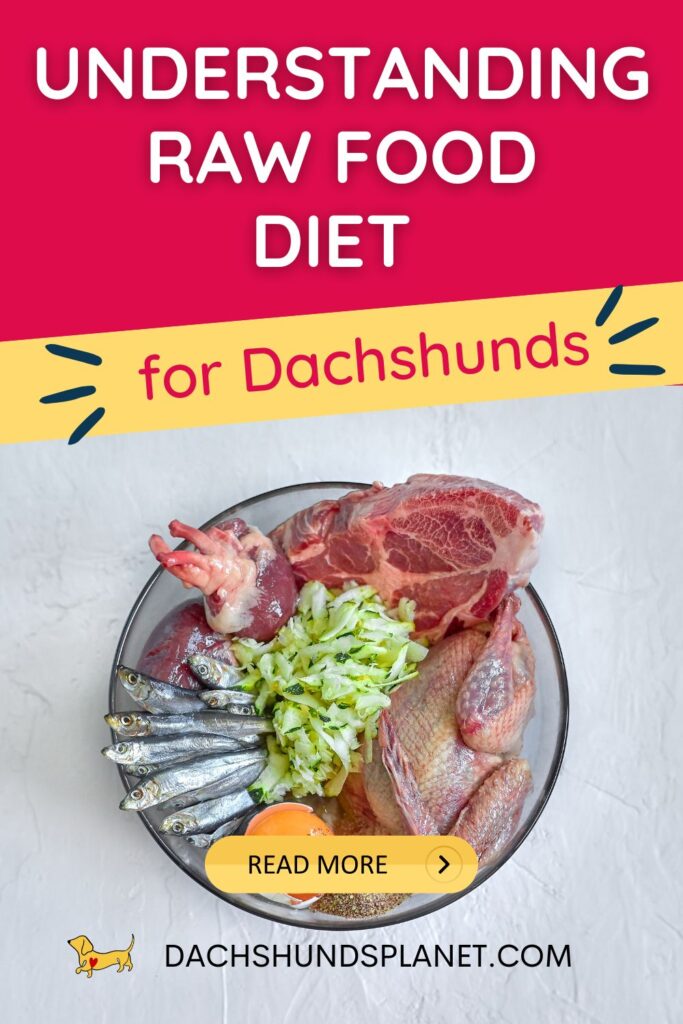

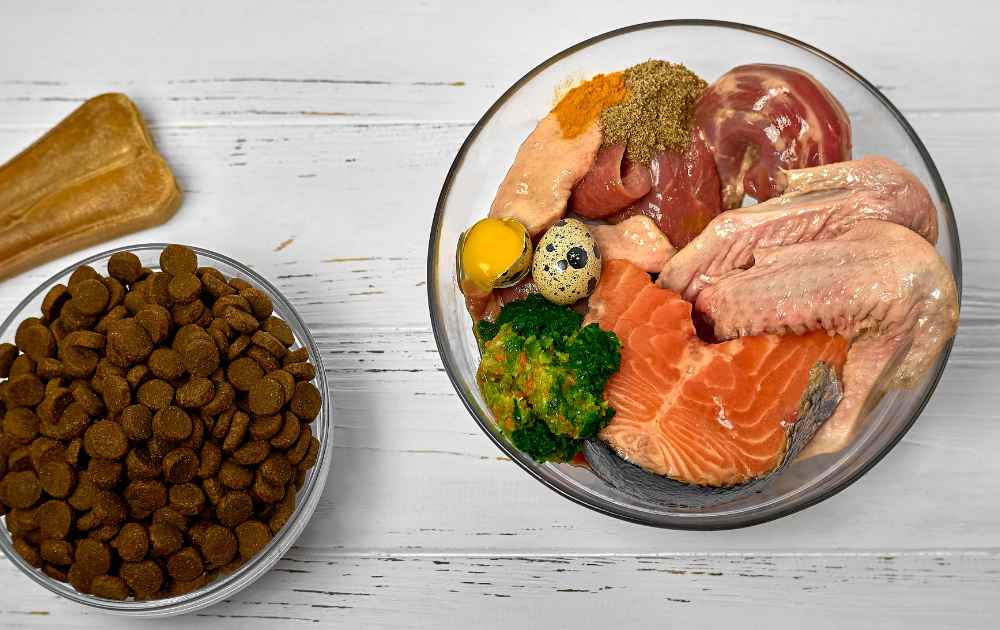
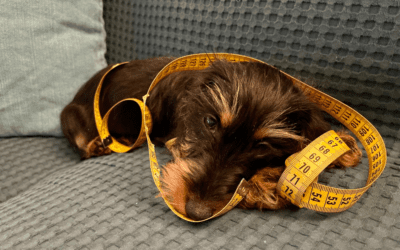


0 Comments